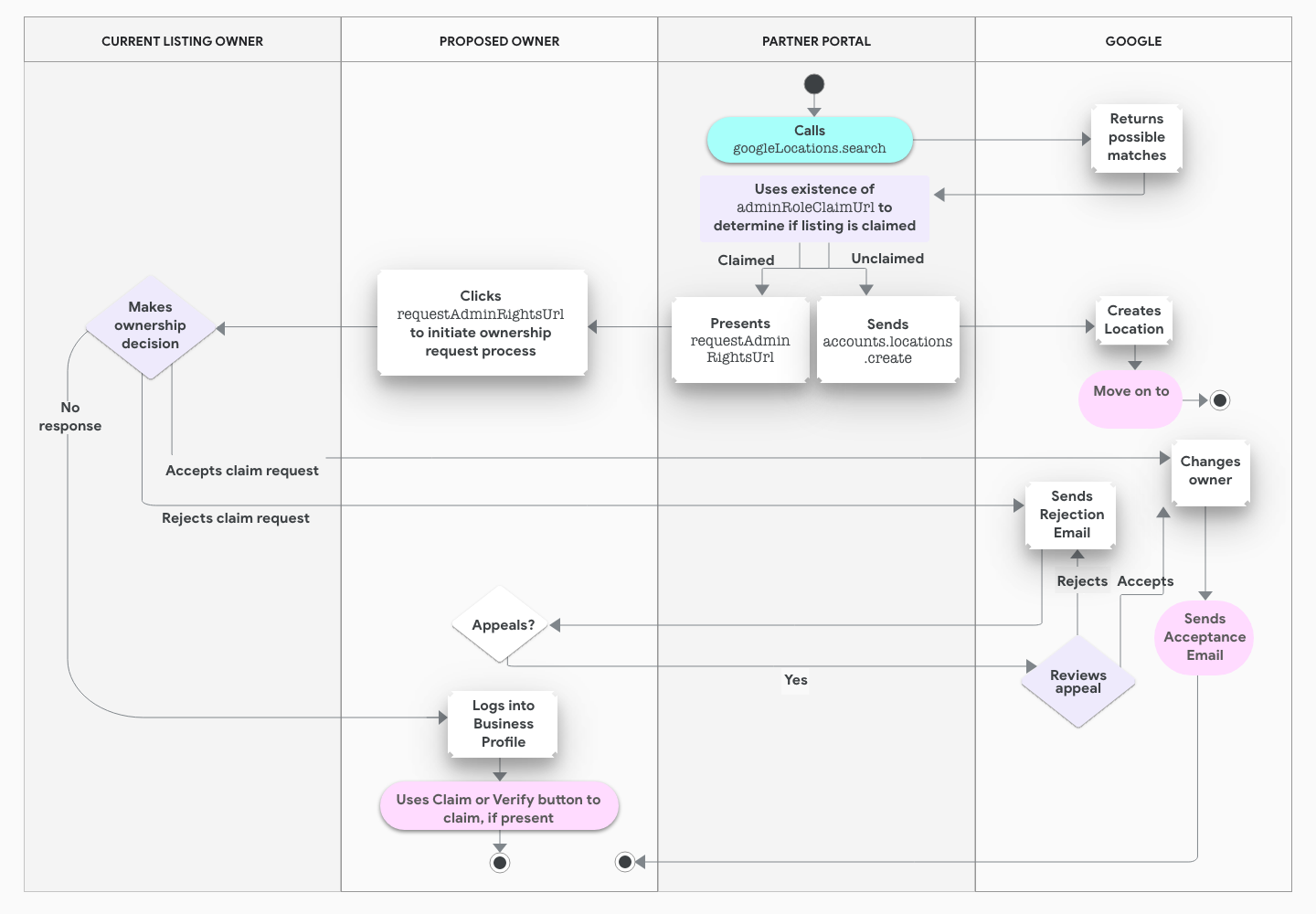La API de GoogleLocations te permite ver con anticipación si se reclamó una ubicación en el Perfil de Negocio. De esta manera, si la ubicación se reclamó, puedes solicitar acceso a ella de inmediato. Además, si administras cuentas verificadas de forma masiva, puedes seleccionar con mayor precisión posibles coincidencias con anticipación y evitar la creación de ubicaciones duplicadas.
El extremo de la API muestra una URL que indica si ya se reclamó una ubicación. Si se reclamó, la misma URL te permite iniciar el proceso de solicitud de acceso.
En la siguiente imagen, se proporciona una descripción general del proceso para obtener la propiedad de una ubicación.

Los siguientes pasos te permiten usar la API de GoogleLocations:
- Recopilar datos de ubicación del comercio
-
Llama al extremo
googleLocations.search. Proporciona los datos de ubicación en el cuerpo de la llamada. Como alternativa, puedes proporcionarla en una cadena de consulta, similar a lo que un usuario ingresaría en la Búsqueda o Maps. Por ejemplo, "Starbucks 5th ave NYC".La API muestra una lista de ubicaciones que podrían coincidir y la información sobre cada una, como
locationNamey la dirección. - Selecciona la ubicación que coincida con la tuya. Si no hay coincidencias, llama a
accounts.locations.createy avanza al paso 5. -
Según el estado de
requestAdminRightsUrlen la respuesta, realiza las siguientes acciones:- Si existe
requestAdminRightsUrl, otro usuario es el propietario de la ficha. Dirige al comercio a la URL para que inicie una solicitud de acceso y propiedad de la ubicación existente en el Perfil de Negocio. - Si
requestAdminRightsUrlno existe, llama aaccounts.locations.createy crea una ficha nueva que se verificará más adelante.
- Si existe
- Si creaste fichas nuevas como parte de este proceso, puedes usar las APIs de verificación para comenzar a verificarlas. Para obtener más información, consulta Administra la verificación.
